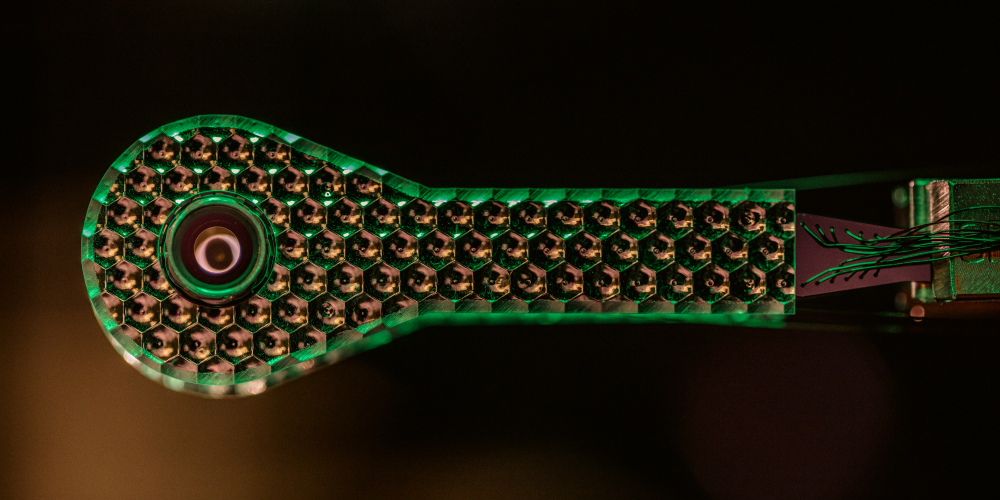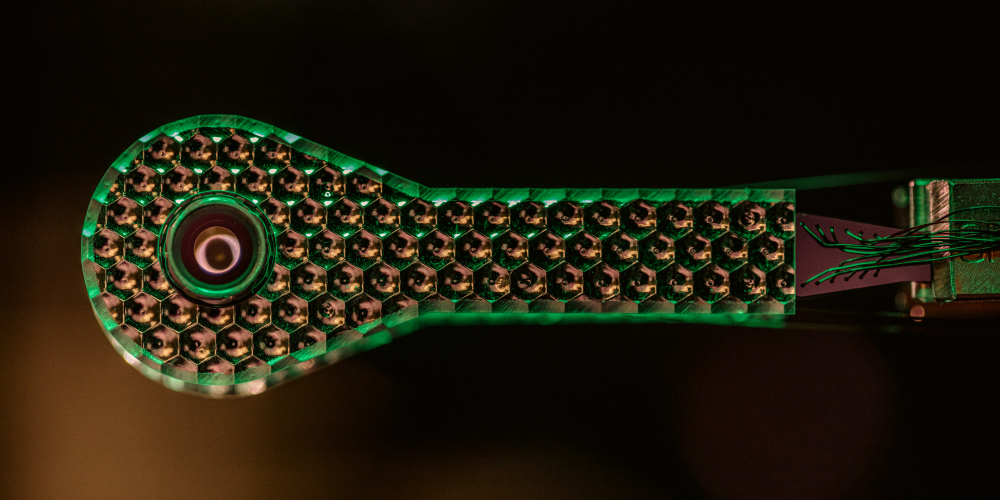Gaining Ground in Nuclear Fusion
Researchers at the National Ignition Facility (NIF) are celebrating the end of 2022 with a long-awaited result. The team reported yesterday at a press briefing that one of its laser-powered fusion reaction trials produced 1.5 times more energy than it consumed. The result is the second major advance reported this year by the NIF team (see Viewpoint: Fusion Turns Up the Heat). That demonstration produced a gain (the ratio of energy out to energy in) of 0.72, while this experiment achieves a gain greater than one—a first for any fusion experiment. The breakthrough signifies the culmination of over 60 years of work on fusion research, motivated by the dream of clean, abundant energy. However, researchers note that a commercial laser-based fusion reactor remains “decades away.”
The record-breaking fusion experiment occurred at 1:03 a.m. PST on December 5, 2022, when NIF researchers fired 2 MJ of energy at a fuel target and recorded a fusion energy release of just over 3 MJ. At the press briefing, US Secretary of Energy Jennifer Granholm offered a big congratulations to the NIF team for a result that she said “will go down in the history books.” Lawrence Livermore National Laboratory (LLNL) director Kim Budil said that the result is a huge step for fusion research. She added, “I cannot wait to see where it takes us.”
Based at LLNL in California, the $3.5 billion NIF facility studies future energy production as well as nuclear arms capabilities without the need of actual weapons testing. The technique used to generate nuclear reactions is called inertial confinement fusion (ICF). In a typical experiment, researchers fire 192 high-powered laser beams at a millimeter-wide metal cylinder that holds a peppercorn-sized capsule filled with nuclear fuel. The beams heat the cylinder to a few million degrees Celsius, causing it to release a torrent of x rays that heat and crush the capsule. As a result, the fuel—a mixture of two forms of heavy hydrogen, deuterium and tritium—can briefly become hotter and denser than the Sun. Under these conditions, the hydrogen nuclei fuse together to form helium, producing a few-billionths-of-a-second-long burst of energy.
The NIF experiments faced several setbacks after they started in 2009. In the last few years, however, the team has made steady progress toward yesterday’s goal. One of the major steps occurred in August 2021 when researchers measured an output energy of 1.3 MJ from one of their trials (see Research News: Ignition First in a Fusion Reaction). After a thorough analysis, the team demonstrated that the burn was self-sustaining, a situation that is called “ignition.” This achievement was roundly applauded, but the gain was only 0.72—putting it below the fabled gain-of-one threshold that much of the fusion community was waiting for.
Since then, NIF researchers have performed several follow-up experiments, implementing improvements to various components to reach a gain of one or more. At the press briefing, Michael Stadermann, who is responsible for NIF’s target fabrication, mentioned the implementation of machine-learning tools in selecting capsules with fewer defects—which can disrupt fuel implosion despite being as small as bacteria. NIF implosion-modeler Annie Kritcher described other changes, including an 8% boost in the laser energy and new techniques for balancing the laser energy that strikes the target.
Researchers outside of NIF have expressed admiration for the breakthrough. “It proves that the long-sought-after goal, the ‘holy grail’ of fusion, can indeed be achieved,” said Jeremy Chittenden from Imperial College London. Matthew Zepf from the Helmholtz Institute Jena in Germany credited the development to improved target design and the use of magnetic fields (see Focus: Magnetic Field Heats Up Fusion). “From the previous result my judgement was that reaching the gain-of-one threshold was simply a matter of time—although this has come somewhat faster than I expected,” Zepf said. “Exciting times.”
The excitement stems in part from the potential that the new result could have for clean energy. Compared to fission reactions, fusion reactions should produce far less radioactive waste. Fusion fuel is also abundant, as hydrogen can be retrieved from ocean water. However, those at the press briefing stressed that there is much to do to turn laser-based ICF technology from a scientific wonder to a practical energy source.
One of the main obstacles to commercialization is the overall efficiency of the process. Each firing of the lasers requires 300 MJ of electricity, meaning that the fusion reactions are operating at a net loss of 99% of the initial energy input. Another drawback is the repetition rate, which is currently limited to roughly one laser shot per day. A commercial fusion reactor would need to perform a few shots per minute, according to Budil. Overcoming these challenges will take time. “Not six decades, I don’t think. Not five decades, which is what we used to say,” Budil said. Instead, she thinks “a few decades of research on the underlying technologies could put us in a position to build a power plant.” She also remarked that another fusion technique, called magnetically confined fusion, is in some ways closer to commercialization (see Q&A: A 4D Fusion Puzzle).
Despite the hurdles, fusion researchers and supporters have reason to be optimistic with the ongoing progress. “This milestone moves us one significant step closer to the possibility of zero-carbon, abundant fusion energy powering our society,” Granholm said.
–Michael Schirber
Michael Schirber is a Corresponding Editor for Physics Magazine based in Lyon, France.





